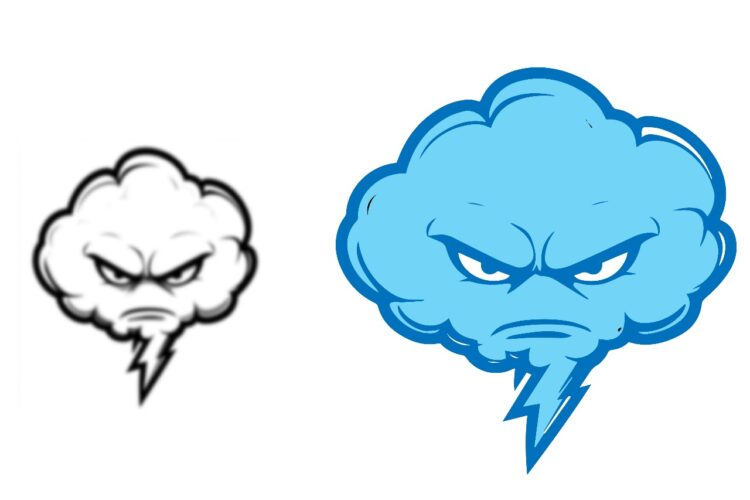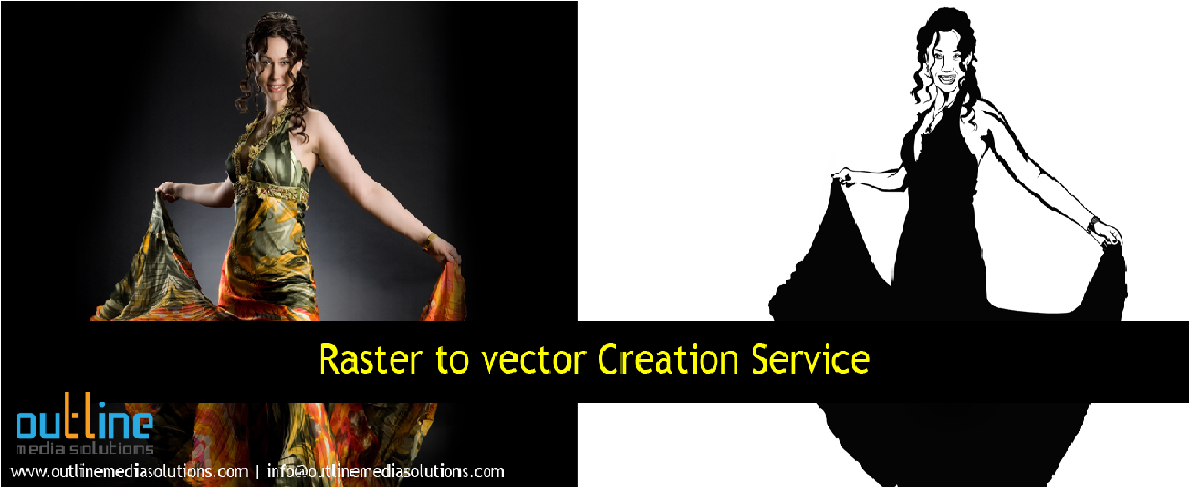The Power of Raster to Vector Conversion in Modern Digital Design
The Power of Raster to Vector Conversion in Modern Digital Design
In today’s digital and high-resolution world, achieving clarity, flexibility, and scalability in images is critical. Raster to vector conversion is a key technique that enables images to be enlarged or modified without sacrificing quality, ensuring that every pixel detail is preserved and optimized for any scale.

What is Raster to Vector Conversion?
Raster images are composed of pixels or dots of color that together form an image. Common formats like JPEG, PNG, and BMP are all raster-based, meaning they rely on a fixed grid of pixels. While raster images work well for photos and intricate graphics, they have limitations, especially when resized, as pixelation can reduce quality.
Vector graphics, on the other hand, are composed of paths and curves derived from mathematical equations, which allows them to be scaled to any size without losing quality. Converting a raster image to a vector format involves creating paths based on the shapes and colors of the original image. The result is a scalable, versatile vector file that maintains crisp lines, making it ideal for various design applications.
Benefits of Raster to Vector Conversion
- Unlimited Scalability: Vector images are resolution-independent, meaning they maintain quality and clarity no matter how large or small they are scaled. This is essential for designs that may be used in various sizes, from business cards to billboards.
- Flexibility Across Mediums: Vector files are compatible with multiple design software applications and can be easily incorporated into different projects, from digital graphics to physical prints, screen printing, and more.
- Editable Components: Each component in a vector image is independently editable. Designers can adjust individual shapes, lines, and colors without impacting the entire image, making vectors ideal for logos, icons, and detailed illustrations that may require customization.
- Reduced File Size for Complex Designs: Unlike high-resolution raster images, vector files can be less data-heavy, especially for intricate linework or designs without gradients. This results in faster processing times and ease of sharing across platforms.
Key Industries and Applications
Raster to vector conversion serves as a fundamental process across many industries:
- Architecture and Engineering: Precise, scalable blueprints and CAD drawings are essential for these fields. Vector graphics allow architects and engineers to work with detailed layouts and structures that remain crisp in both large and small formats.
- Graphic Design and Branding: Logos, typography, and brand assets need to look sharp on all materials, whether on a small label or a large banner. Vectors ensure that each design remains consistent in quality and style.
- Manufacturing and Industrial Design: In manufacturing, vector files are used for creating accurate component diagrams, technical illustrations, and prototypes, as they can be resized to match product specifications without sacrificing precision.
- Printing and Merchandise: For high-quality prints, vector images ensure consistency and clarity, regardless of the output size. This is especially important in screen printing and merchandise production, where sharp edges and defined shapes are crucial.
The Raster to Vector Conversion Process
The raster to vector conversion process involves a series of precise steps to ensure accuracy and maintain the essence of the original image:
- Image Analysis and Preparation: The process begins with analyzing the image to determine its complexity. High-contrast images with clear lines are often easier to convert than complex, gradient-heavy photos.
- Tracing and Path Creation: Using vector-based software, the outline and internal shapes of the raster image are traced to create paths. Each color or shade in the original image may be assigned a unique path or fill.
- Shape and Detail Refinement: Manual adjustments are made to each line, curve, and corner, ensuring the vector’s accuracy and alignment with the original image’s details.
- Layering and Color Matching: If the original raster has multiple colors or shades, vector paths are layered and filled to match the look of the original as closely as possible.
- Final Quality Check: Each vector file undergoes a quality check to ensure clarity, alignment, and that it scales without distortion. Any final refinements are made before delivering the file.
Technical Tools and Software for Raster to Vector Conversion
Several industry-standard tools are used in the raster to vector conversion process. Some popular software includes:
- Adobe Illustrator: Known for its precision and versatility, Illustrator is a top choice for creating detailed vector graphics. Its Image Trace feature automates the initial conversion, followed by manual refinement for accuracy.
- CorelDRAW: A favorite among graphic designers, CorelDRAW offers powerful vector conversion tools and works well for complex designs with multiple colors and layers.
- Inkscape: A free, open-source tool with vector editing capabilities that is ideal for simpler raster to vector projects.
Each tool provides unique features that enhance the conversion process, ensuring that the final vector graphic meets high standards of quality and flexibility.

Common Applications for Raster to Vector Conversion
The applications of raster to vector conversion extend across various creative and industrial fields. Some common uses include:
- Logo and Icon Design: Vector logos and icons are crucial for businesses as they need to be resized for various uses, from websites to signage, without losing clarity.
- Product Design and Packaging: Vectors are essential for creating detailed, scalable designs for packaging, labels, and product prototypes.
- Typography and Font Creation: Custom fonts and typographic designs benefit from vectors, as each letter can be refined and scaled individually.
- Animation and Digital Illustration: Vectors allow for clean, scalable illustrations that work well in animation, where precision and reusability are key.
Conclusion
For those needing high-quality vector conversions, Outline Media Solutions (OMS) offers expert Raster to Vector Conversion services. With a skilled team and advanced tools, Outline Media Solutions ensures that every project is handled with precision, transforming your images into scalable, professional-grade vector files ready for any digital or print use. Whether you’re in architecture, graphic design, or manufacturing, Outline Media Solutions can help you unlock the potential of your images with seamless conversion services.

